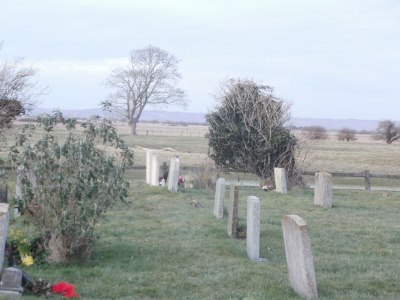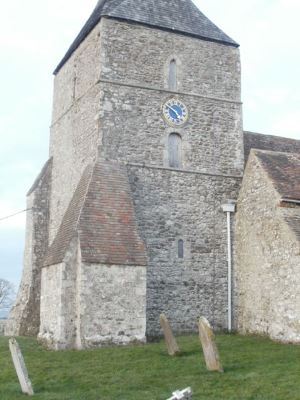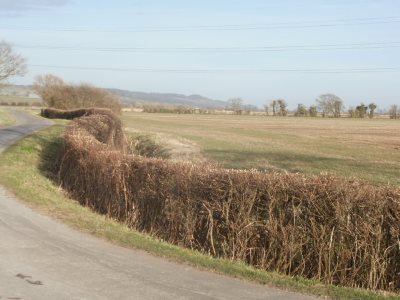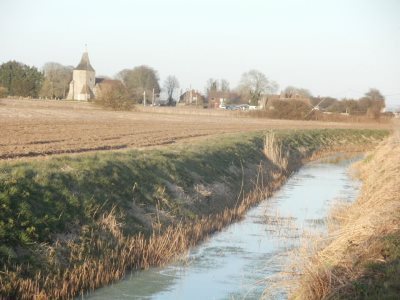The authors who write as A.J. MacKenzie are stopping by with an essay (accompanied by some gorgeous photos) about the beautiful and atmospheric Romney Marsh. This landscape figures in their new novel
The Body on the Doorstep (Zaffre, hb and ebook), first in the appropriately-titled Romney Marsh Mysteries set in the south-east of England in the 1790s.
~
On Romney MarshA.J. MacKenzie

‘The Fifth Continent’ is how a nineteenth-century clergyman once described Romney Marsh, and even today that sense of separateness and isolation is still there. A major road now crosses the Marsh, and you can drive across it from Rye to Hythe in just a few minutes. But the Marsh is still a distinct place. The hills of the Weald of Kent close off one side of the triangle of the Marsh, marking the beginnings of a distinctly different landscape; on the other two sides is the sea, sweeping up onto beaches of sand and shingle.
Get off that main road, and Romney Marsh is quiet. Inland, the villages are small and peaceful. Many are little larger than they were in the Middle Ages; some are actually smaller, and some of the old settlements have disappeared entirely. Hope was once a thriving village not far from New Romney; now, only the crumbling remnants of its church still stand. St Mary in the Marsh, the central location of
The Body on the Doorstep, is mostly new buildings; only the church and the Star Inn still survive from earlier days.

St. Mary in the Marsh churchyard, looking west to Hills at Appledore
There is of course much new building on the Marsh. You only need to turn your eyes south, to the great blocky shape of Dungeness power station and the white towers of the wind farm on Walland Marsh, to see this. But it is also quite easy strip away the accretions of time. Maps help; we found several late eighteenth century maps of Romney Marsh, and with these it is easy to see how the coastline has changed and settlement patterns have shifted.

St. Mary in the Marsh tower
And apart from that main arterial road, the Marsh is also quiet. The roads are empty. It is possible, if you want to drive at the speed of a trotting carriage to see how long it will take to ride from Appledore to St Mary, to do so, and no one will bother you. You can abandon your car and walk the tracks and footpaths where Hardcastle and Mrs Chaytor walked, and the loudest sound you will hear is the twittering of birds or in spring, the baa-ing of lambs. Behind the roads and houses and power stations, the Marsh’s past is there, plain to see.

Romney Marsh, with Hills of Lympne in the distance
The weather impacts on Romney Marsh like few other places in England. The flat land offers no breaks from the wind; storms from the Channel roar over the Marsh with nothing to stop them. In the heat, there are few trees to offer shade from the sun. When it rains there, it really rains. The weather is dramatic, and it sets the mood. It will be no surprise to anyone who know Romney Marsh that weather plays a big part in
The Body on the Doorstep.

St. Mary in the Marsh, taken from the West
Most of all, the Marsh is beautiful. We don’t know whether JMW Turner ever painted there or not, but it would not surprise us; it is the sort of austere space of land and sky and sea that he loved. In
The Body on the Doorstep, Turner went to Romney Marsh seeking inspiration; Hardcastle went seeking peace; Amelia Chaytor went to find solitude. We went, and found a story.
~
 A.J. MacKenzie
A.J. MacKenzie is the pseudonym of Marilyn Livingstone and Morgen Witzel, a collaborative Anglo-Canadian husband-and-wife duo.
Between them they have written more than twenty non-fiction and academic titles, with specialisms including management, medieval economic history and medieval warfare. See their website at
http://www.ajmackenzienovels.com.
This essay forms part of the authors' blog tour; see the other stops as listed below. (photo credit: Vicky Stottor/Shuv Williams)
~

 newest »
newest »
 newest »
newest »
 Setting, in both time and space, calls to me so strongly. The 1790s in southeastern England -- excellent. And thanks to these photos, I'm already there before I even begin reading!
Setting, in both time and space, calls to me so strongly. The 1790s in southeastern England -- excellent. And thanks to these photos, I'm already there before I even begin reading!











